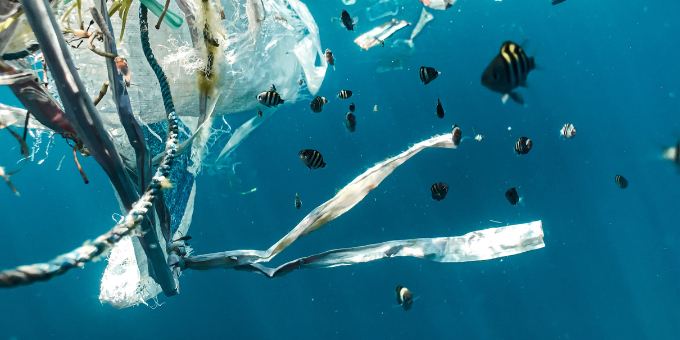In light of growing climate disasters and pollution, France’s new laws aimed at preventing the wastage and destruction of goods continue to be rolled out.
Originally signed by French president Emmanuel Macron in 2020, these laws are intended to encourage reusing and recycling resources. This legal change covers everything from clothes – with 14 million tonnes wasted every year – down to single-use plastics and the plastic packaging used for fruits and veggies. In fact, as of this year, selling plastic wrapped produce under 1.5 kilograms is illegal. Next on the list, fast food shops will be banned from using single-use plates and utensils in 2023.
The problem with plastic.
Many are lauding this development as a step in the right direction, considering the impact plastic has on our global pollution rates, landfill and oceans. Each year, 8 trillion tonnes of plastic pollute our oceans, with plastics accountable for 80% of ocean debris. One of the consequences is the yearly 100, 000 deaths of marine life caused by choking on or getting entangled in these plastics.
Even worse still, our love affair with plastic poses dangers to our health. Phthalates are one type of plastic that has found its way into our food sources, from fast food to fresh produce from the grocery store. Often times, this happens because the plastic packaging itself has leached into the food. This includes fruit and veggies too!
Why is this an issue? These plastics wreak havoc on our hormones, causing inflammation and higher risk for disease. Scarier yet, studies have shown that long-term exposure targets the endocrine system, leading to issues with fertility and reproductive function.
The food wastage crisis.

These French laws also govern the needless wasting of fruit and veggies, though an initial food waste law was enacted in 2016. These legal changes mean supermarkets are not allowed to dispose of expired foods or unsold products, instead they’re required to donate the food. You may be wondering if this is actually making much of a difference, but according to PBS, nearly 50, 000 tonnes of food is saved from wastage, and food bank donations are up by over 20%.
Food wastage is a massive contributor to climate change, partly caused by the methane released by these scraps, and with the United Nations reporting half of fruit and veggie produce is wasted, it’s kind of a big deal.
How you can reduce food waste at home.

Freezing food.
Freezing produce like fruits and veggies means you won’t have to worry about them going off, which leads to unnecessary waste. Often supermarkets sell produce in amounts that are impossible to use within the week – sometimes they won’t even make it that long before losing declining in quality. This is where freezing comes in – use only what you need, then pop the rest in the freezer to use at your convenience. We recommend using sustainable methods to wrap your food, since the goal is waste prevention, right? Try reusable containers in freezer-safe materials like stainless steel. Beeswax or soy wax wraps and containers work too, and you don’t have to worry about accidentally consuming microplastics that come with the territory of zip-lock bags.
Use the whole vegetable.
When chopping up celery or broccoli, don’t throw away the leaves or stalks – just drop it all in the pot. That’s right, it’s all edible. Many veggies can be eaten from top to bottom. Add parsnips and Brussels sprouts to your list too, since these nutritional powerhouses are also completely edible!
Composting
You don’t have to have a green thumb to get into composting, nor do you need any state-of-the-art tech to get you started. It’s one of the best waste management forms, despite often being left off of the classic “reduce, reuse, recycle” phrase. Here’s how to do it:
- Choose your fruit and veggie scraps; potato skins and berries work well.
- You can even add ground coffee and human hair. Yep, you read that right.
- Pick out a place to set your compost up.
- Make a mix of 3 parts dirt, 1 part scraps.
- Now just give it some time to do its thing!
France has set a pretty impressive example for the rest of us – and they’ve started seeing the results too. Until we catch up, we hope you give our simple waste-reduction tips a try next time you’re cooking up a storm in the kitchen.






Leave a comment (all fields required)